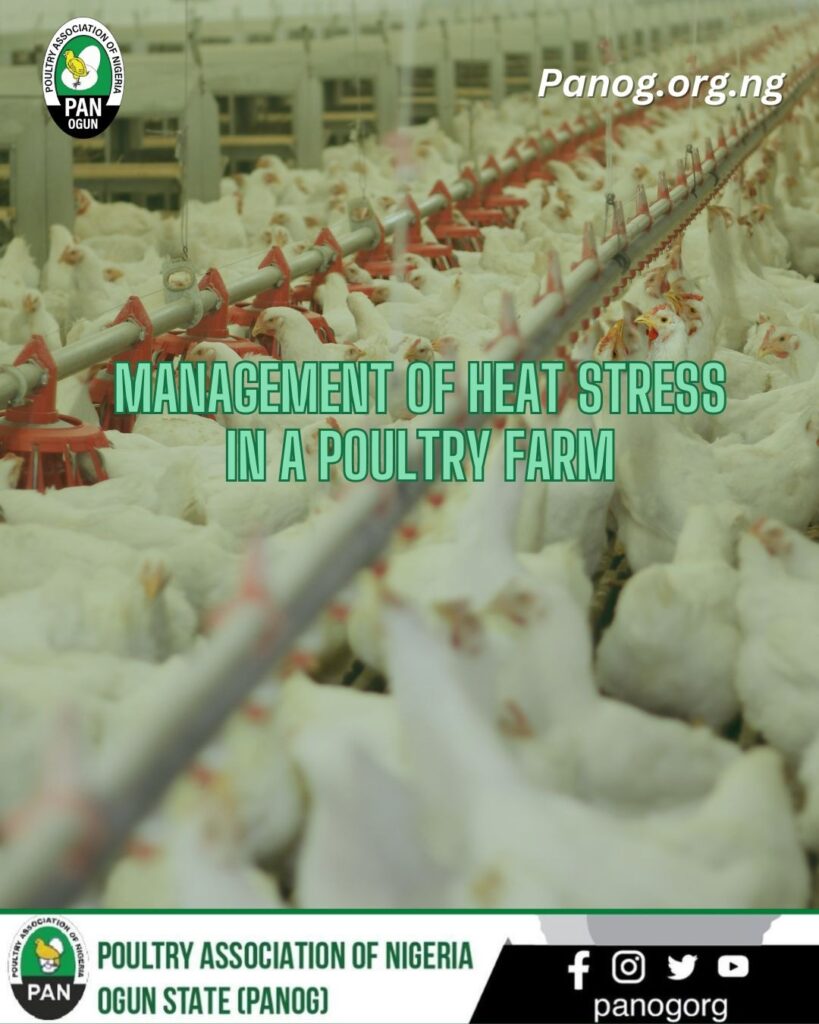Managing heat stress in poultry farms is crucial for maintaining the health, welfare, and productivity of the birds, especially during hot weather. Here are some effective strategies for managing heat stress in poultry farms:
Proper Ventilation: Ensure adequate ventilation in poultry houses to promote air circulation and reduce heat buildup. Utilize fans, air inlets, and exhaust systems to maintain optimal airflow throughout the facility.
Shade and Shelter: Provide shaded areas and shelter within the poultry house to allow birds to escape direct sunlight and seek relief from high temperatures. Install curtains or shades to block excessive sunlight while still allowing airflow.
Cooling Systems: Implement cooling systems such as evaporative cooling pads, misting systems, or foggers to lower the ambient temperature in the poultry house. These systems help reduce heat stress by providing a cooling effect for the birds.
Access to Clean Water: Ensure birds have continuous access to clean, fresh water at all times. Water intake increases during hot weather, so it’s essential to regularly check and maintain water supply systems to prevent dehydration and heat stress.
Dietary Management: Adjust the birds’ diet during hot weather to support heat stress management. Provide feed with lower protein content to reduce metabolic heat production and include electrolytes and vitamins in the diet to support hydration and overall health.
Reduce Stocking Density: Decrease stocking density during hot weather to reduce crowding and heat buildup within the poultry house. This allows birds to spread out and dissipate body heat more effectively.
Monitor Bird Behavior and Health: Regularly observe bird behavior and health indicators for signs of heat stress, such as panting, wing spreading, decreased feed intake, or increased mortality. Implement interventions promptly if heat stress symptoms are observed.
Manage Lighting: Adjust lighting schedules to minimize heat production from artificial lighting sources. Utilize natural light whenever possible and reduce lighting intensity during the hottest parts of the day to help keep temperatures lower inside the poultry house.
Provide Cooling Surfaces: Place cooling surfaces such as wetted pads or surfaces made of materials with high thermal conductivity (e.g., ceramic tiles) in the poultry house for birds to rest on and dissipate excess heat from their bodies.
Early Morning and Late Evening Activities: Schedule routine management activities such as feeding, watering, and flock monitoring during the cooler parts of the day to minimize stress on birds during peak heat hours.
By implementing these strategies, poultry farmers can effectively manage heat stress in their flocks, ensuring the health, welfare, and productivity of their birds even during hot weather conditions. Regular monitoring, proactive measures, and proper management practices are key to mitigating the impact of heat stress on poultry farms.

